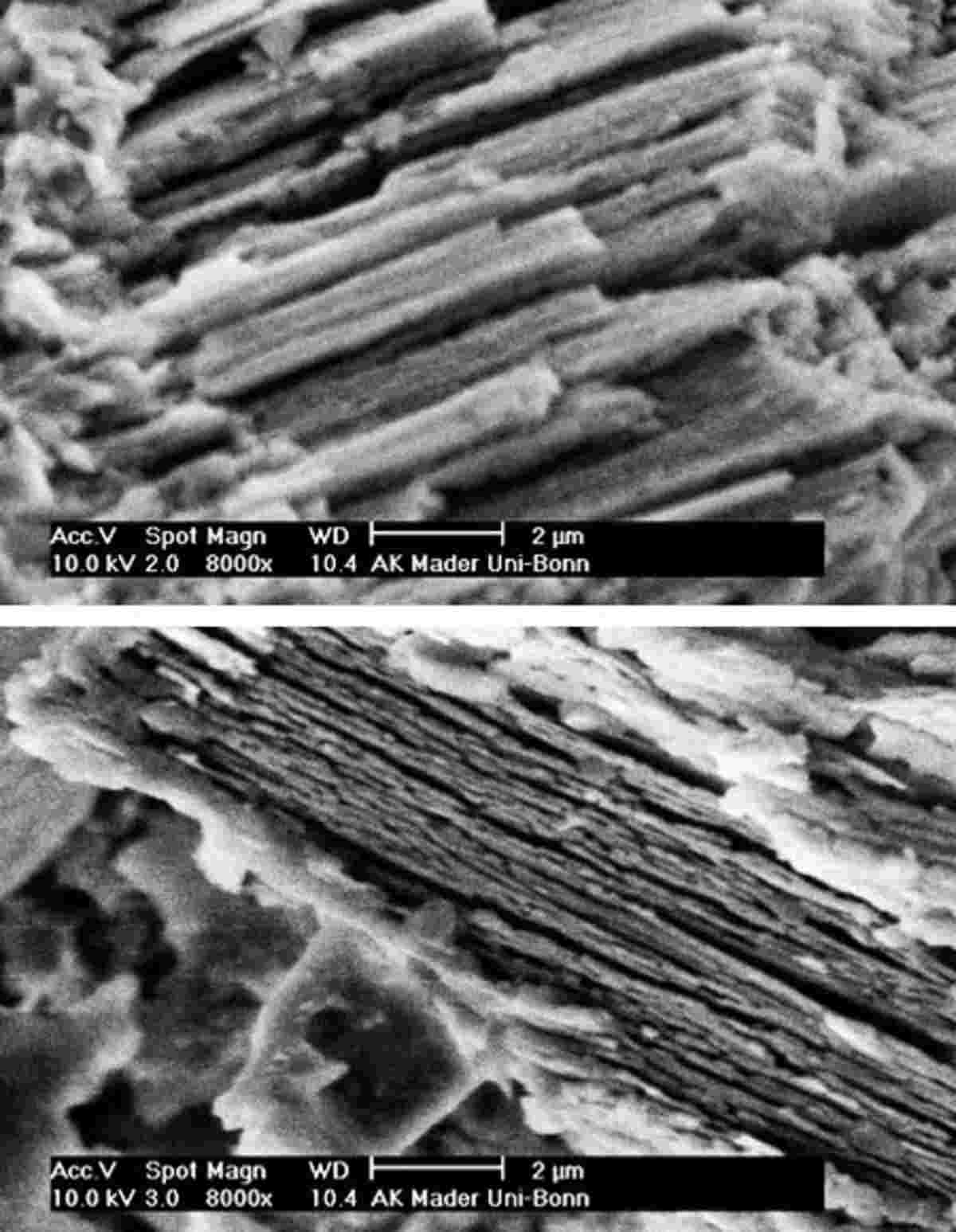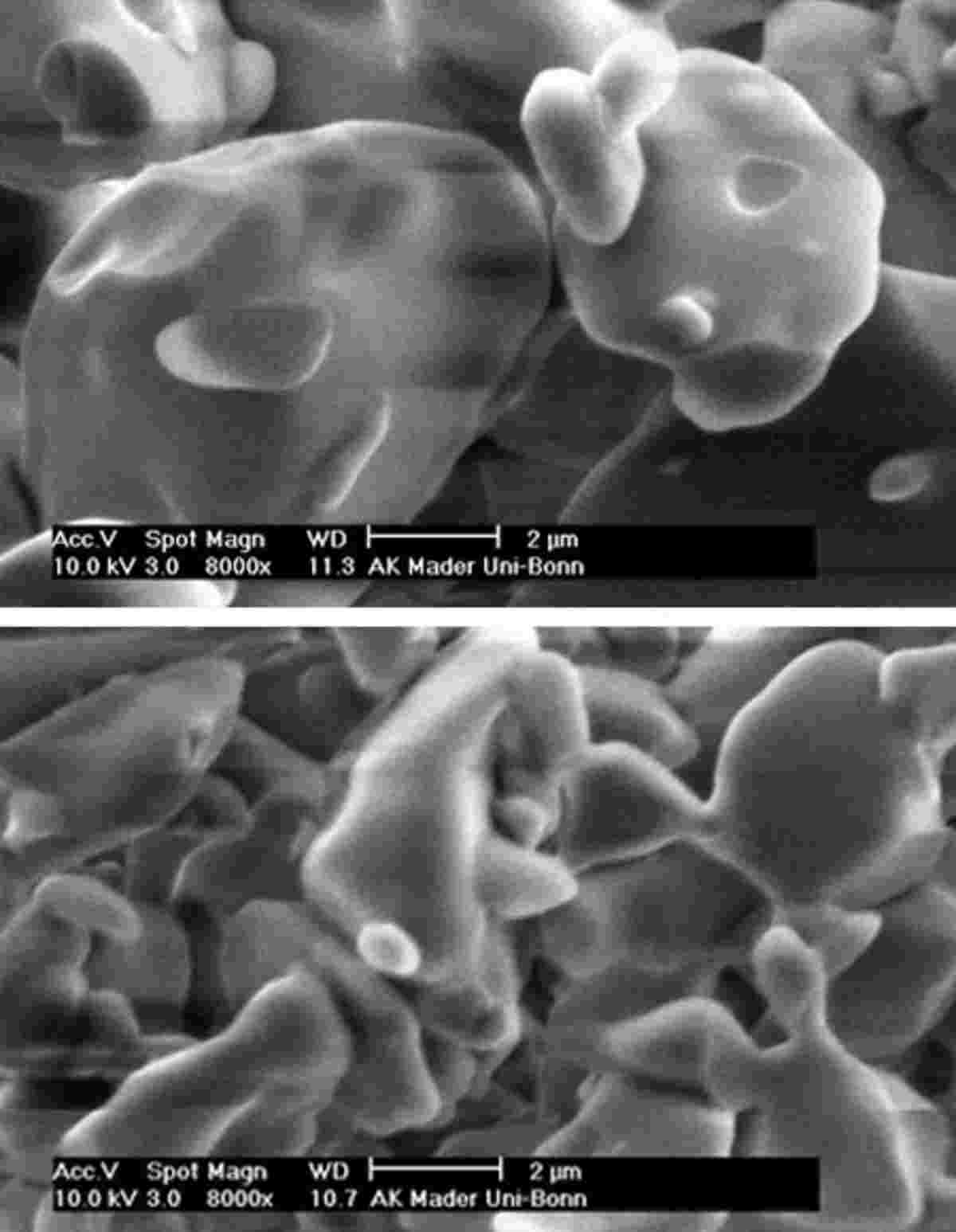Suction cup product finder
Which suction cup for which project? – or: which filter material is suitable for which solute?
Get product information here:
- When extracting soil solution with suction cups (or suction plates), solutes are partly adsorbed on the filter surface causing a distortion in the results.
- Solutes have a specific affinity to certain suction cup/plate materials, similar to their specific affinity to different compounds of the soil solid phase.
- No filter material is inert or indifferent against all solutes.
Causes of adsorption on suction cups and plates
- Physicochemical properties of the suction cup (plate’s) surfaces (charges, functional groups)
- Size of the specific surface area of filter materials (see figures of ceramic and glass suction cups)
Depending on the substance group being investigated, the filter material of suction cups and plates has to be chosen according to the following table:
Table 1: Which filter material for which solute?
| Chemical category | Glass | Ceramic | Plastic |
| Organic solutes (e.g. pesticides, DOC) | ++ | - | - |
| Phosphate | ++ | -- | ++ |
| Nitrate, Chloride, Bromide | ++ | ++ | ++ |
| Sodium, Calcium | 0 | + | ++ |
| Heavy metals | 0 | -- | ++ |
The listed recommendations were derived from the literature (see below) and laboratory studies conducted by ecoTech in cooperation with the Institute of Soil Science at the University of Bonn. However, in some individual cases (e.g. by extreme pH-values or high concentrations of certain solubilizers) other selections are possible, although for most applications the selection in Tab. 1 are appropriate.
The two-canula system
Each ecoTech suction cup is equipped with two tubes or canulas . This special construction has the following key benefits:
- Control of vacuum at every single suction cup
- Complete emptying of all tubes through ventilation
- No mixing of samples taken at different dates
- No contamination of the sampling system by micro organisms
- Oxidation processes minimized by filling the collection system with N2 or other gases prior to the suction phase
Excursion: Is a conditioning sufficient?
The method of conditioning filter materials often used (saturation of all sorption places by percolation with a certain solution) appears to eliminate the sorption problem only because the substances adsorbed at the filter material are in equilibrium with the percolating soil water (law of mass action).
In long-term experiments, this equilibrium might indeed show that equilibrated suction cups do not affect the solution concentration of some solutes: but this is only valid when the concentration of this solute in soil remains constant (Guggenberger & Zech 1992). However, as soon as the solution concentration in soils changes - and to determine precisely this, long-term experiments are required – a new equilibrium is achieved.
This balance adjustment shows that i) with an increasing solute concentration in soil, more ions are adsorbed at the filter surface or ii) with a decreasing solute concentration in soil, already adsorbed substances are released from the filter surface and pass into the percolate. In both cases, the result is a largely preventable variation of the soil water sample and the actual concentration course is either not noted, or at best with a delay.
Natural changes of the chemical properties of a soil solution, in particular the seasonal fluctuations of pH value and ion strength, can also be of great importance for the solution equilibrium (comp. Andersen et al. 2002). A change in the pH value and/or ion strength leads to a full saturation of the filter’s sorption capacity (in the meaning of a "conditioning") plus the constant concentration of the analyte leads to a modification of its sample concentration.
By decreasing pH value and increasing ionic strength, part of the already adsorbed ions is released from the filter surface and passes into the sample. The necessary consequence is to minimize the filter’s sorption capacity by choosing the right filter at the beginning of the project.
Our recommendations for the use of suction cup and suction plate materials are based on our own scientific lab- and field studies, on field reports of clients and colleagues and on the precise analysis of the following publications:
- Andersen, M.K., K. Raulund-Rasmussen, B.W. Strobel & H.C.B. Hansen (2002): Adsorption of cadmium, copper, nickel, and zinc to a poly(tetraflourethene) porous soil solution sampler; J. Environ. Qual., 31, 168-175.
- Barbee, G.C. & K.W. Brown (1986): Comparison between suction and free-drainage soil solution samplers; Soil Science, 141 Nr. 2, 149-154.
- Bottcher, A.B., L.W. Miller & K.L. Campbell (1984): Phosphorus adsorption in various soil-water extraction cup materials: effect of acid wash. Soil Sci. 137, 239-244..
- Creasey, C.L. & S.J. Dreiss (1988): Porous cup samplers: cleaning procedures and potential sample bias from trace element contamination; Soil Science, 145 Nr. 2, 93-101.
- Dahlgren, R.A. (1993): Comparison of soil solution extraction procedures: effect on solute chemistry; Commun. Soil Sci. Plant Anal. , 24, 1783-1794.
- Dehner, U., T. Bausinger & J. Preuß (2003): Adsorption von Nitroaromaten an unterschiedlichen Saugkerzenmaterialien; altlasten spektrum, 6/2003, 295-299.
- DVWK (1990): Gewinnung von Bodenwasserproben mit Hilfe der Saugkerzen-Methode; Berlin., Bd. Merkblatt 217
- Grossmann, J. (1988): Physikalische und chemische Prozesse bei der Probenahme von Sickerwasser mittels Saugsonden; Diss. Institut für Wasserchemie und Chemische Balneologie der Technischen Universität München, 147 S.
- Grossmann, J., M. Bredemeier & P. Udluft (1990): Sorption of trace metals by suction cups of aluminum oxide, ceramic and plastics; Z. Pflanzenernähr. Bodenk., 153, 359-364.
- Grossmann, J., G. Freitag & B. Merkel (1985): Eignung von Nylon- und Polyvinylidenfluoridmembranfiltern als Materialien zum Bau von Saugkerzen; Z. Wasser- Abwasser-Forsch., 18, 187-190.
- Grossmann, J., K.-E. Quentin & P. Udluft (1987): Sickerwassergewinnung mittels Saugkerzen - eine Literaturstudie; Z. Pflanzenernähr. Bodenk., 150, 258-261.
- Guggenberger, G. & W. Zech (1992): Sorption of dissolved organic carbon by ceramic P 80 cups. Z. Pflanzenernähr. Bodenkd. 155, 151-155.
- Haberhauer, G. (1997): Adsorptionsverhalten von Saugkerzenmaterialien. 7. Gumpensteiner Lysimetertagung. BAL Gumpenstein, 27-31.
- Hansen, E.A. & A.R. Harris (1975): Validity of soil-water samples collected with porous ceramic cups. Soil Sci. Soc. Am. J. 39, 528-536.
- Hetsch, W., F. Beese & B. Ulrich (1979): Die Beeinflussung der Bodenlösung durch Saugkerzen aus Ni-Sintermetall und Keramik; Z. Pflanzenernähr. Bodenk., 142, 29-38.
- Kalbe, U. & W. Berger (2004): Saugkerzen zur Untersuchung der Bodenwasserbeschaffenheit - Ein Überblick der Einsatzmöglichkeiten; TerraTech, 11/12.
- Koch, D. & M. Grupe (1993): Schwermetall-Sorptionsverhalten einer Saugkerze aus porösem Borosilikatglas. Z. Pflanzenernähr. Bodenkd. 156, 95-96.
- Litaor, M.I. (1988): Review of soil solution samplers. Water Resour. Res. 24, 5, 727-733.
- Raulund-Rasmussen, K. (1989): Aluminum contamination and other changes of acid soil solution isolated by means of porcelain suction-cups; Journal of Soil Science, 40, 95-101.
- Long, L. (1978): A glass filter soil solution sampler. Soil Sci. Soc. Am. J. 42, 834-835.
- Rais, D., B. Nowack, R. Schulin & J. Luster (2006): Sorption of Trace Metals by Standard and Micro Suction cups in the Absence and Presence of Dissolved Organic Carbon; J. Environ. Qual. 35: 50-60.
- Schimmack, W., K. Bunzl & K. Kreuzer (1984): Sorption von Schwermetallionen aus Bodenlösungen durch Saugkerzen - Einfluß der Huminsäuren. Proceedings Symposium 'Wald und Wasser', Grafenau.
- Siemens, J. und M. Kaupenjohann (2002): Contribution of dissolved organic nitrogen to N leaching from four German agricultural soils; J. Plant Nutr. Soil Sci, 165, 675-681.
- Siemens, J. (2003): Controls of Carbon, Nitrogen, and Phosphorus fluxes in vadose zone and groundwater of protected watersheds in Münster (Germany); Diss. Universität Berlin, 104 S.
- Siemens, J. & M. Kaupenjohann (2003): Dissolved organic carbon is released from sealings and glues of pore-water samplers; SSSAJ, 67, 795-797.
- Spangenberg, A., G. Cecchini & N. Lamersdorf (1997): Analysing the performance of a micro soil solution sampling device in a laboratory examination and a field experiment. Plant and Soil 196, 59-70.
- Tischner, T., G. Nutzmann & R. Pothig (1998): Determination of soil water phosphorus with a new nylon suction cup; Bulletin of freshwater ecology and inland fisheries, 61 (3), 325-332.
- Weihermüller, L., J. Siemens, M. Deurer, S. Knoblauch, H. Rupp, A. Göttlein & T. Pütz (2007): In Situ Soil Water Extraction: A Review; J. Environ. Qual. 36, 1735-1748.
- T. Pütz (2007): In Situ Soil Water Extraction: A Review; J. Environ. Qual. 36, 1735-1748.
- Wenzel, W.W., R.S. Sletten, A. Brandstetter, G. Wieshammer & G. Stingeder (1997): Adsorption of trace metals by tension lysimeters: nylon membrane vs. porous ceramic cups. J. Environ. Qual. 26, 1430-1434.
- Wessel-Bothe, S., S. Pätzold, C. Klein, G. Behre & G. Welp (2000): Adsorption von Pflanzenschutzmitteln und DOC an Saugkerzen aus Glas und Keramik; J. Plant Nutr. Soil Sci, 163.

